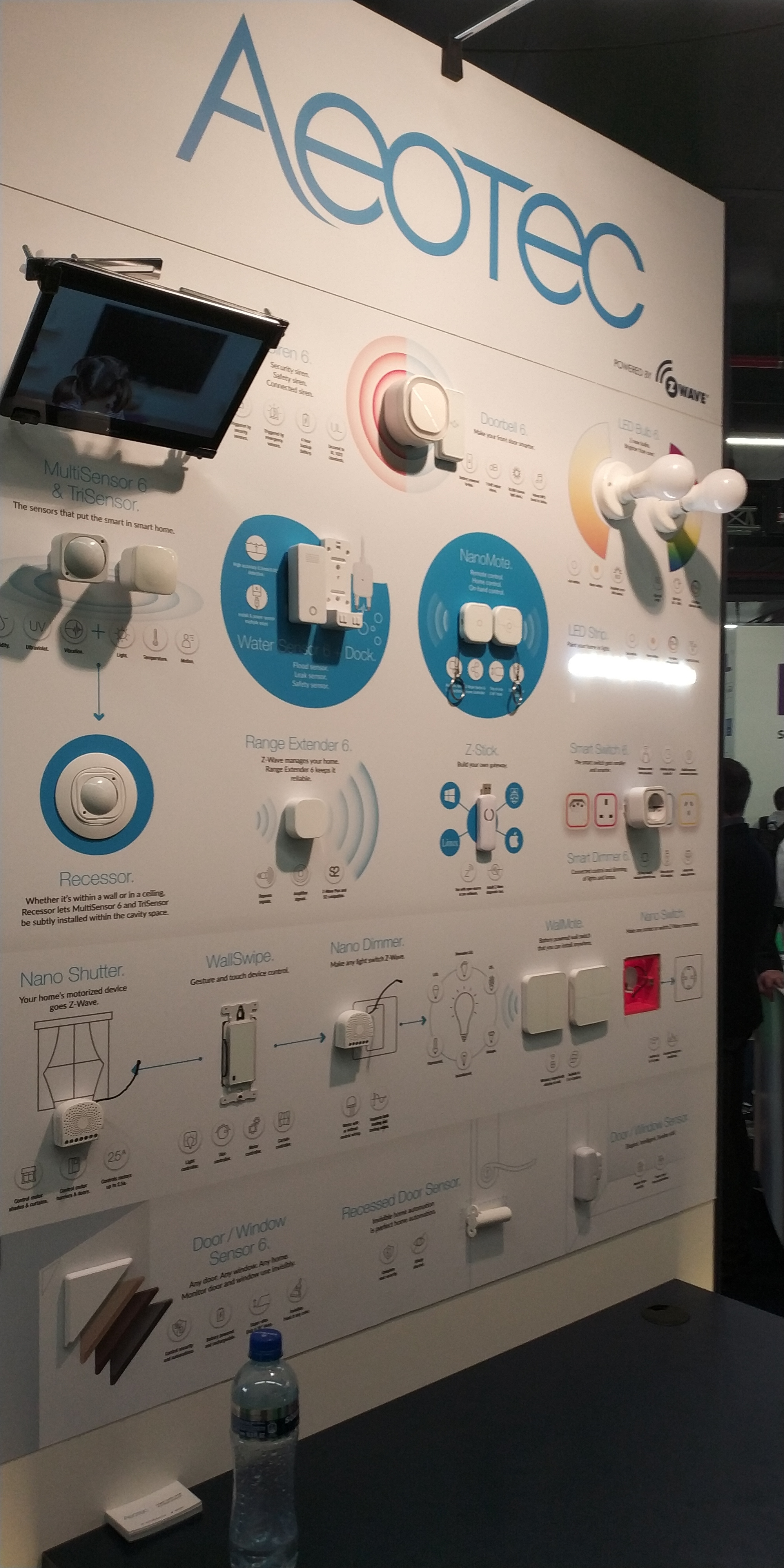Integrated Systems Europe Day 2 - Zwave
ZWave have a booth here at the ISE exhibition, it's in the Smart Buildings Hall and is completely overshadowed by the sheer amount of KNX company and industry booths. This is Europe after all and EIB (European InstaBus) is what KNX is based upon. The ZWave booth was made up of lots of tiny microbooths featuring companies utilising the ZWave wireless technology for smart home and automation.
Assa Abloy Door and Lock Solutions
Aeotec Nano Smart Home Automation
So what is ZWave first of all? Zwave (or Z wave or Z-wave) is a protocol for communication among devices used for home automation. It uses RF for signaling and control. So basically its a protocol/standard for small home technology pieces to all talk to each other. The range is up to 100m and its very low energy so normal batteries can be used and last for a very long time.
Hogar Touch Panels for Smart Lighting
FifthPlay Smart Home Automation
Oblo Living Zwave Smart Home Control
The Z-Wave Alliance was established in 2005 as a consortium of companies that make connected appliances controlled through apps on smartphones, tablets or computers using Z-Wave wireless mesh networking technology. The alliance is a formal association focussed on both the expansion of Z-Wave and the continued interoperability of any device that utilises Z-Wave
Leedarson Zwave Intelligent Sensors
Neeo Smart Remote
For a little bit more information about Zwave and its rivals in the smart home networking industry the below is taken from the Zwave Wikipedia.
For smart-home wireless networking, there are numerous technologies competing to become the standard of choice. Wi-Fi consumes a lot of power, and Bluetooth is limited in signal range and number of devices. Other network standards competing with Z-Wave include Insteon, Thread and ZigBee. Of the three, Z-Wave has the longest operating range at 300 feet (outdoor) and 80+ feet (indoor). Insteon has the largest number of maximum devices capability at 17.7 million (to ZigBee's 65,000 and Z-Wave's 232). Thread has the fastest data transmission rate at 250 kbps. Z-Wave has better interoperability than ZigBee, but ZigBee has a faster data transmission rate. Thread operates on the busy Wi-Fi standard frequency of 2.4 GHz, while Z-Wave operates at 908 MHz in the US, which has reduced noise and a greater coverage area. ZigBee operates on both 915 MHz and 2.4 GHz frequencies. All three are mesh networks







